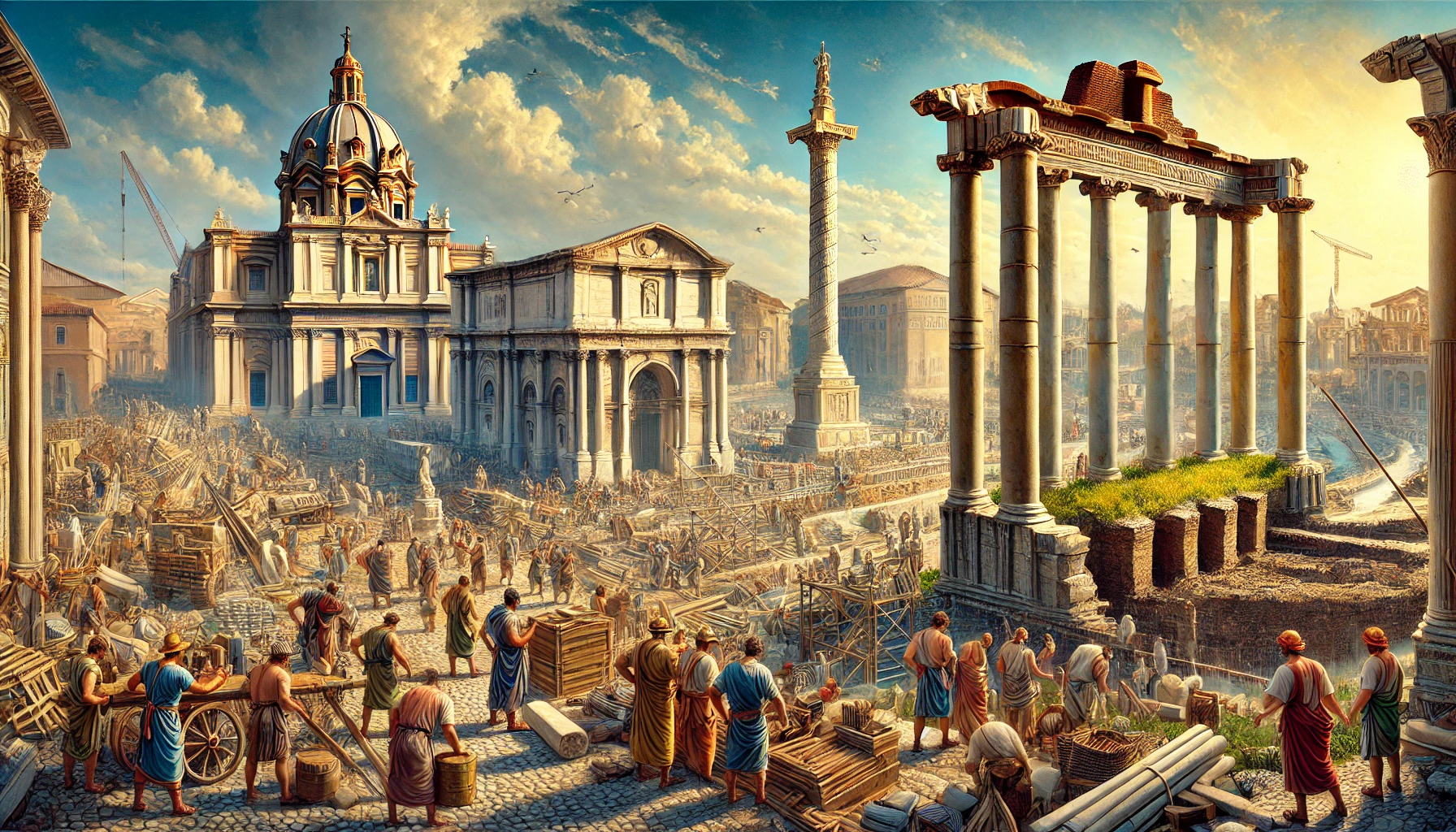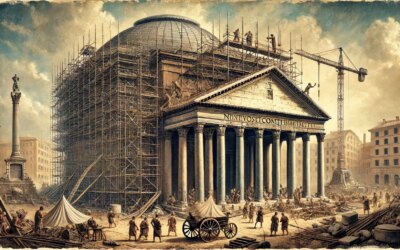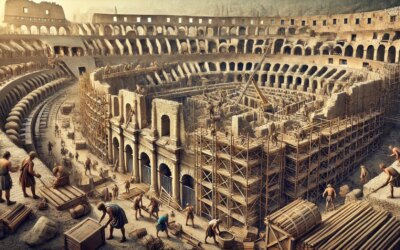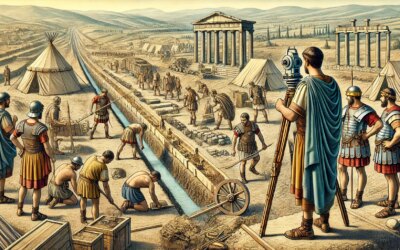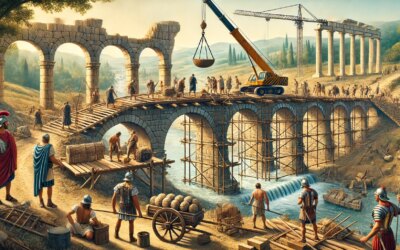Trajan’s Grand Vision
In the early 2nd century AD, Emperor Trajan, one of Rome’s most successful rulers, sought to leave a lasting architectural legacy. Having secured immense wealth from his victories in the Dacian Wars, he commissioned the construction of the largest and most opulent forum Rome had ever seen. Designed by the renowned architect Apollodorus of Damascus, Trajan’s Forum was a masterpiece of Roman urban planning.
The Engineering Marvel of the Forum
Trajan’s Forum was not just an expansion of Rome’s civic center; it was an engineering triumph. Built between 107 and 112 AD, the project required the removal of an entire hill to create a vast open space. This massive undertaking demonstrated the Romans’ mastery of construction techniques, including the use of concrete, marble, and elaborate columned facades.
The Basilica Ulpia: A Monument to Justice
At the heart of the forum stood the Basilica Ulpia, a colossal structure dedicated to legal and administrative affairs. With towering columns and a vast central hall, it was the largest basilica in Rome, setting the standard for future Roman and Christian architecture.
Trajan’s Column: A Triumph in Stone
One of the most iconic features of the forum was Trajan’s Column, erected in 113 AD. Standing 30 meters tall, it depicted scenes from the Dacian Wars in intricate relief, spiraling upwards in a visual narrative. The column not only celebrated Trajan’s victories but also served as his eventual tomb, with his ashes interred at its base.
The Forum’s Role in Roman Society
Beyond its architectural grandeur, Trajan’s Forum functioned as a center of political, commercial, and social activity. Senators, merchants, and ordinary citizens gathered there, making it a hub of Roman public life. Its libraries housed thousands of scrolls, reflecting Rome’s commitment to knowledge and culture.
The Forum’s Legacy
Trajan’s Forum remained a centerpiece of Rome for centuries, though later emperors struggled to maintain its splendor. As the Western Roman Empire declined, the forum fell into disrepair, with its marble repurposed for medieval churches and palaces. Today, its ruins stand as a testament to the ambition and architectural genius of ancient Rome.

